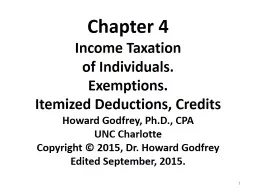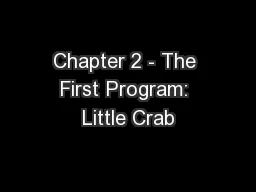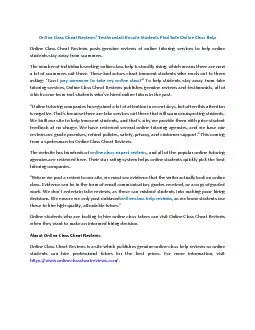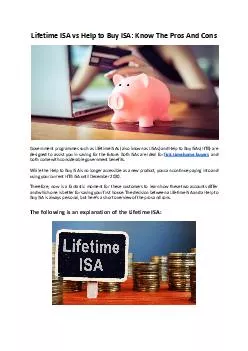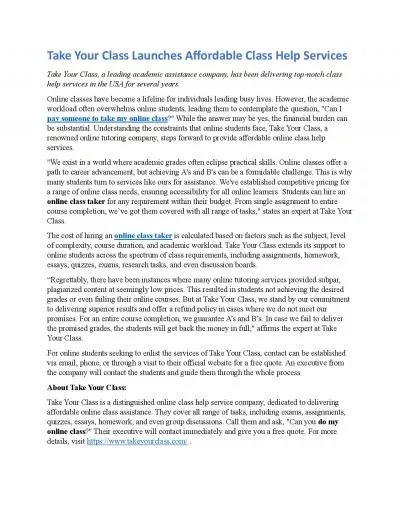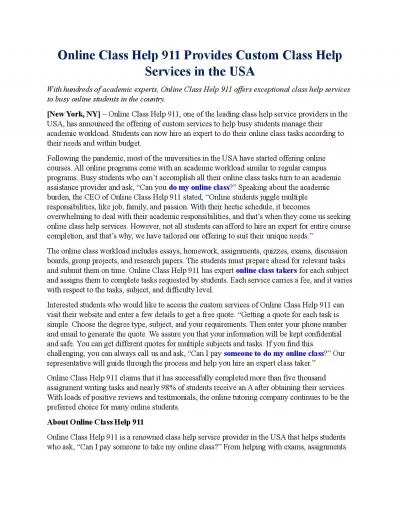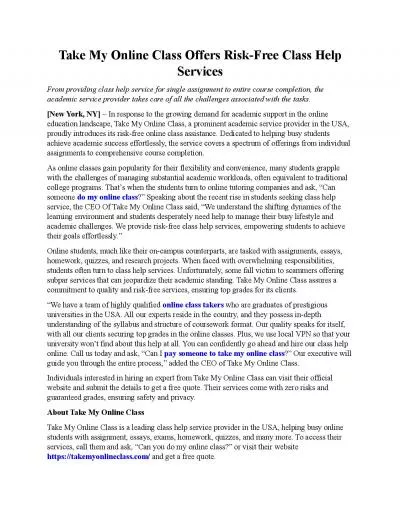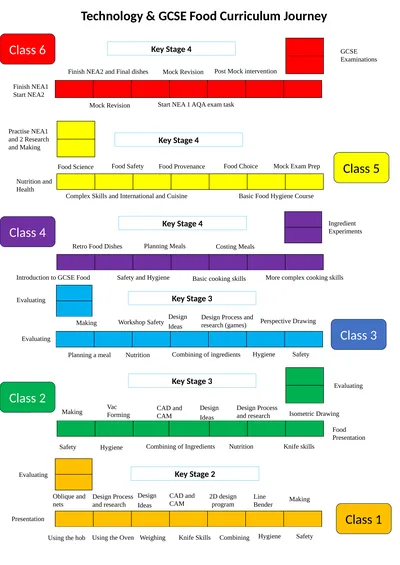PPT-1 Chapter First Class
Author : contessi | Published Date : 2020-08-06
Lowes Financial Statements Howard Godfrey PhD CPA UNC Charlotte Copyright 2016 Dr Howard Godfrey Edited August 25 2015 I spend much of my summer traveling on
Presentation Embed Code
Download Presentation
Download Presentation The PPT/PDF document "1 Chapter First Class" is the property of its rightful owner. Permission is granted to download and print the materials on this website for personal, non-commercial use only, and to display it on your personal computer provided you do not modify the materials and that you retain all copyright notices contained in the materials. By downloading content from our website, you accept the terms of this agreement.
1 Chapter First Class: Transcript
Download Rules Of Document
"1 Chapter First Class"The content belongs to its owner. You may download and print it for personal use, without modification, and keep all copyright notices. By downloading, you agree to these terms.
Related Documents

